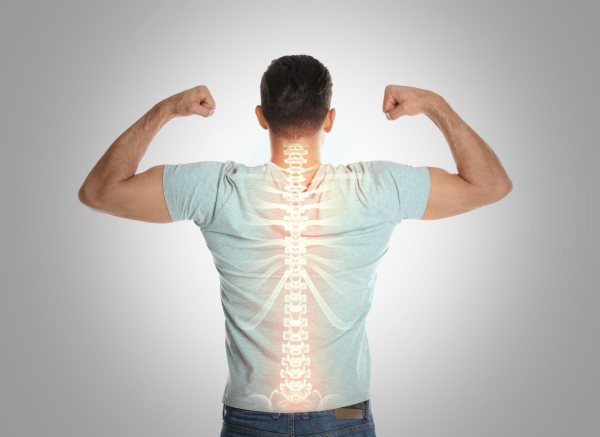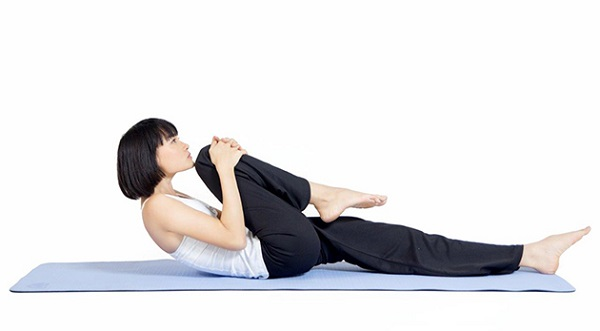How to care for and protect bone and joint health every day
According to the World Health Organization (WHO), the period from 2011 to 2020 is considered the “decade of bones and joints”. This reflects the fact that bone and joint diseases are increasingly common and tend to be younger. In particular, diseases such as osteoarthritis, osteoporosis, gout, herniated discs or rheumatoid arthritis not only cause prolonged pain, but also increase the risk of disability.
Therefore, an urgent recommendation for everyone is to proactively protect and care for bone and joint health early on. This is a way to help you maintain a flexible and resilient skeletal system, while preventing many dangerous diseases.
1. Why should you take care of your bone and joint health every day?
The skeletal system plays an important role in the body such as supporting and supporting flexible movement; protecting internal organs such as the brain, heart and spinal cord; and it is also an abundant source of calcium reserves.
However, like a machine that works a lot for a long time, the skeletal system is difficult to avoid damage. Along with the age of 30, the process of bone formation is slower than the decomposition process, leading to a decrease in bone density, reducing bone function and causing a series of bone and joint diseases. At this time, maintaining and strengthening bone health is necessary to minimize signs of degeneration, bone and joint diseases, and osteoporosis.

From the age of 30, bone density and function decrease, leading to many dangerous diseases, so you need to take care of your bone and joint health to improve your quality of life.
Another reason why everyone should take care of their bones and joints from now on is that the skeletal system is easily damaged by lifestyle. When we eat too much or lack nutrients, along with the habit of little exercise, often wearing high heels, overworking or exercising in the wrong posture… all can put heavy pressure on the joints, leading to bones becoming weaker, brittle and easily broken.
Therefore, in addition to caring for and protecting bones, each person must also change their diet and exercise scientifically. The more good habits you build, the more you will maintain long-term bone and joint health.
2. Instructions on how to care for and protect bone and joint health
To protect healthy bones and joints, prevent the risk of degeneration, you should refer to the following 7 tips:
2.1. Building a good diet for bones and joints
Don’t be surprised when, during the consultation process for bone and joint health, your doctor encourages you to eat a lot of vegetables. Because the abundant vitamin and mineral content (vitamin B, C, E, beta-carotene, potassium, magnesium) in vegetables helps increase the production of bone-forming cells, while fighting osteoporosis, as well as other bone and joint diseases.
In addition, each person must also eat enough protein-rich foods such as meat, fish, eggs, milk, beans, to maintain bone mass and quality. Foods rich in calcium and vitamin D such as fatty fish, liver, cheese, and egg yolks are also necessary supplements, contributing to the development of a healthy, flexible skeletal system and reducing pain symptoms.

You should increase your intake of foods rich in vitamin D and calcium to improve the health and flexibility of your bones and joints.
It should be noted that your daily diet must include all of the above foods. This helps balance the body’s nutrients, avoiding deficiencies and excesses that are harmful to bone and joint health. In addition, in your meals, you should also limit foods high in sugar and bad fats. These are factors that cause overweight and obesity, increasing pressure on bones and making bones more susceptible to fracture.
Nourishing and caring for bones and joints through diet is very important. Each of us should choose foods that are good for bones and joints in our daily meals, to help keep bones and joints strong and flexible, avoiding…
2.2. Regular and reasonable exercise
Regular exercise helps increase bone mineral density, increase bone strength and size, and prevent osteoarthritis. You can choose some exercises such as walking, jogging, yoga, cycling, yoga, swimming to do regularly every day. Then, the muscles around the joints will also be healthy, reduce bone loss and can reduce swelling, inflammation or pain in the joints.
Because bones and joints are vulnerable parts, during exercise, you need to equip yourself with protective gear and pay attention to warming up carefully before exercising. In addition, it is necessary to maintain a reasonable intensity and frequency of exercise, do not exercise too hard as it can have a negative impact on bones and joints.
2.3. Do exercises that are good for bones and joints
In addition to sports, you can refer to some of the exercises below to improve the health and flexibility of bones:
Exercise 1
Lie down on the mat, then clasp your hands together, bend your legs, press your knees down below your chest, at the same time slowly raise your head and neck and touch your knees lightly. Perform alternately on the left and right sides every 5 times to help reduce pain, numbness, and aching in the thighs and legs.

Every day, you should spend 10-15 minutes doing exercises that are good for your bones and joints.
Exercise 2
Stand up straight, with your legs shoulder-width apart. Use your left leg as a support so that your body’s center of gravity is on your left leg. Then, place your hands behind your head and clasp them together. Hold for 10 seconds, then switch sides.
Exercise 3
Sit up straight, with your hands on your thighs, eyes looking straight ahead, and your neck relaxed. Keep this position, and lean to the right so that gravity is on this side. At that time, you can feel your spine stretching. Do this about 10 times, then switch sides and repeat. This exercise promotes blood circulation, reduces back pain and neck fatigue.
2.4. Maintain a reasonable weight
A healthy weight has a positive impact on bone and joint health. Specifically, when weight is controlled stably, this helps bones and joints not bear the weight of the body, thereby avoiding bone fractures and joint pain. In addition, maintaining a reasonable weight helps increase the ability to absorb calcium smoothly, slow down the aging process, as well as reduce the risk of bone loss or osteoporosis.
2.5. Avoid carrying heavy loads, improper living
The best way to protect bones and joints is to stand and sit in an upright position. When you stand or sit with your back straight, the contact area between the two joint surfaces reaches its highest level, helping to minimize pressure on the bones. In addition, this position balances the muscles around the joints – ligaments, reducing pressure on the two cartilage surfaces, thereby reducing the risk of pain and easy joint degeneration.
In addition to the correct living posture, you must also limit postures that affect bone and joint health such as sitting too much – little movement; lying on a mattress or hammock for too long; sleeping on a high pillow; carrying heavy objects or carrying one shoulder; hunching over or standing crookedly.
2.6. Eliminate bad habits for bones and joints
Smoking is one of the bad habits for bones and joints. When smoking regularly, this makes bones more susceptible to fractures, and lower back pain and rheumatoid arthritis can occur more quickly. Along with smoking, alcohol is also the leading cause of reduced calcium concentration in bones, causing osteoporosis or bone loss. Therefore, to protect bones and joints from the risk of damage, you should completely give up smoking and drinking alcohol today.
Many people say that they often experience bone and joint pain when drinking alcohol, even leading to prolonged pain. So what is the cause of this condition, and is this a dangerous sign? Let’s…
2.7. See a doctor when there are unusual signs
If you experience pain, swelling or osteoarthritis after a fall or accident, it is best to see a doctor immediately so that the doctor can examine and accurately assess the extent of the injury. In addition, maintain the habit of regular bone and joint screening to detect abnormalities early, and prioritize choosing a reputable clinic – a place with a team of good, highly specialized doctors to help you build an optimal treatment plan, protecting your overall bone and joint health.

